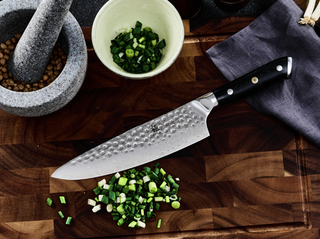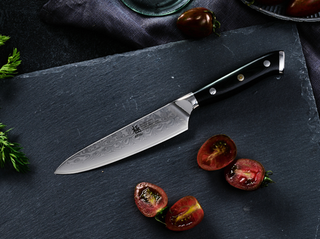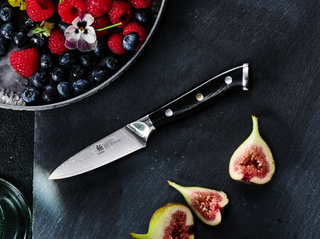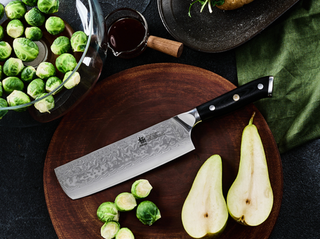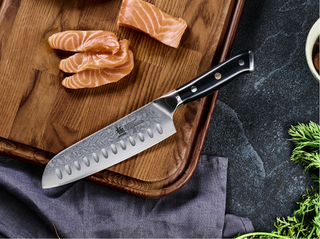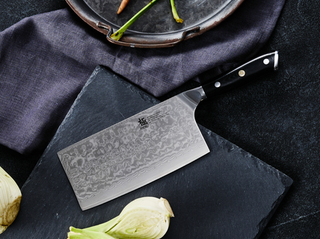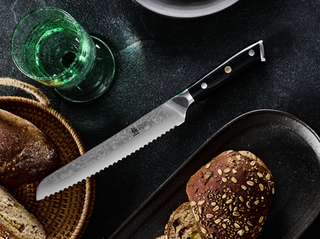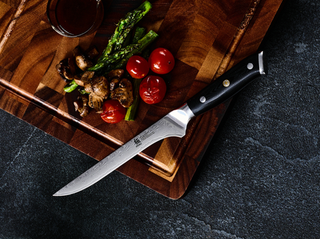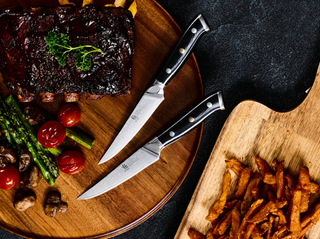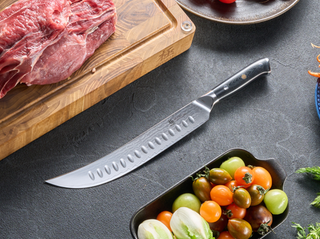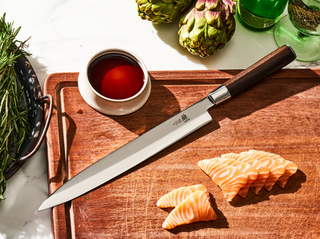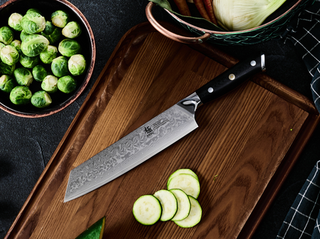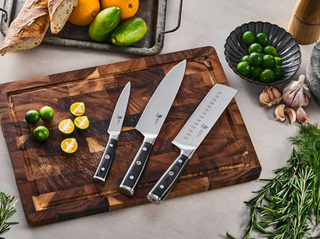Once you learn how to cut a whole chicken properly, you’ll never want to rely on pre-cut pieces again. In fact, cutting a whole kitchen does not require as much effort as it may seem, and with the appropriate knife and methods, it could be accomplished in a few minutes.
This process of cutting a whole chicken is not only economical, but it also provides you with the freedom of the different cuts to make different types of recipes.
The coolest thing is that once you understand the method, you can adapt it to different situations, like how to cut a whole chicken in half for spatchcocking or how to cut up a whole chicken for soups, curries, and stir-fries.
How to Cut a Whole Chicken (Raw)
Step 1: Gather Your Tools
Before you start, make sure you have:
- A sharp chef’s knife (preferably a Gyuto knife)
- A cutting board for meat chosen by food safety experts
- Paper towels
- A small bowl for any scraps you’ll use for stock
A sharp knife is essential here. A dull blade will make the process messy and unsafe.
Step 2: Prepare the Chicken
Pat the chicken dry with paper towels. This prevents slipping and makes cutting easier. Place it breast-side up on your cutting board.
Step 3: Remove the Legs and Thighs
- Pull one leg away from the body and slice through the skin to expose the joint.
- Bend the leg back until the joint pops.
- Cut through the joint to remove the leg and thigh in one piece.
- Repeat with the other side.
Step 4: Separate Drumsticks from Thighs
- Locate the joint between the drumstick and thigh.
- Cut them apart in a clean cut manner. So you get two thighs and two drumsticks.
Step 5: Remove the Wings
- Pull off each wing separately, twist off the joint, and cut it through.
- Wings are awesome for snacks or stocks.
Step 6: Cut the Breast in Half
- Hold the chicken with the breast upward, run your knife down one side of the chicken breast bone, following along the rib cage.
- Now, do it on the opposite side. This will give you two large breast pieces.
- In case you require smaller cuts, cut each breast into two again.
Step 7: Save the Backbone
- Don’t toss it! The backbone is full of flavor.
- Store it in the freezer for the next time you make stock.
How to Cut a Whole Cooked Chicken (Rotisserie Chicken)
Cutting rotisserie chicken requires more care: cooked meat is tender and falls apart more easily. Follow these steps when cutting a whole rotisserie chicken.
Step 1: Let It Rest
- Always allow the chicken to rest for about 10 minutes after cooking.
- This locks in the juices and makes cutting easier.
Step 2: Remove the Legs
- Pull the legs away from the body and slice through the skin.
- Wiggle the legs to find the joint and cut through it.
Step 3: Separate Drumsticks and Thighs
Just like with raw chicken, slice through the joint connecting them.
Step 4: Remove the Wings
- Find the joint and cut cleanly.
- These can be served immediately or saved for later.
Step 5: Carve the Breasts
- Run your knife along the breastbone, slicing down and away from the bone.
- The cooked meat will come off in larger, juicy pieces.
Step 6: Shred or Portion
- For salads, wraps, or soups, shred the chicken by hand.
- For plating, slice into even pieces.
Tips for Success When Cutting Chicken
- Always use a sharp knife to prevent tearing.
- Follow the natural joints rather than cutting through bone.
- Keep your cutting board stable by placing a damp towel underneath.
- Use separate boards for raw and cooked meat to avoid cross-contamination.
- Store leftovers properly, within 2 hours if cooked.

2 Recommended Japanese Knives For Cutting a Whole Chicken?
When it comes to how to cut a whole chicken, your choice of knife matters as much as your technique. A quality kitchen knife that is sharp and ready to work will guarantee clean cuts and will save time.
1. 8" Gyuto Chef Knife | Daimyo Series
For professional-grade precision, the Kyoku Daimyo 8" Chef Knife is a game-changer. Made from vacuum heat-treated Japanese 440C stainless steel (59-60 HRC), it maintains a razor-sharp 13–15° edge that glides effortlessly through meat and joints.
- Precision-engineered blade for lasting sharpness
- Ergonomic rosewood handle with heat/cold resistance
- Ideal for slicing, dicing, and breaking down poultry
With a rosewood handle, this knife is perfect for breaking down both raw and cooked chicken. This knife comes with a protective sheath and a lifetime warranty, making it a long-term kitchen investment.
2. 8" Gyuto Chef Knife | Samurai Series
If you prefer high-carbon steel, the Kyoku Samurai Series 8" Chef’s Knife delivers unmatched performance. Crafted from premium Japanese carbon steel, it offers minimal resistance when slicing through meat, making it perfect for chicken carving.
- Japanese high-carbon steel for superior cutting performance
- Comfortable, ergonomic handle
- Versatile for meats, vegetables, and more
The Pakkawood handle provides a comfortable grip, while the elegant mosaic pin adds style. Like the Daimyo Series, it’s designed for both professionals and home cooks.
Final Thoughts
Once you learn how to cut a whole chicken, you’ll realize how versatile this skill is. It is worth learning to save money, promote the quality of your dishes, and so on.
Preparing raw poultry to use in meal preparations or carving a golden-brown rotisserie chicken dinner is easy when the right technique and tools are used.
Given you want the whole experience to be more relaxed and pleasant, a decent chef's knife, such as Kyoku Daimyo or Samurai Series Gyuto, is an excellent investment. With their precision, balance, and durability, they will reinvent cooking.
You may also be interested in this guide on how to cut dark meat chicken.
